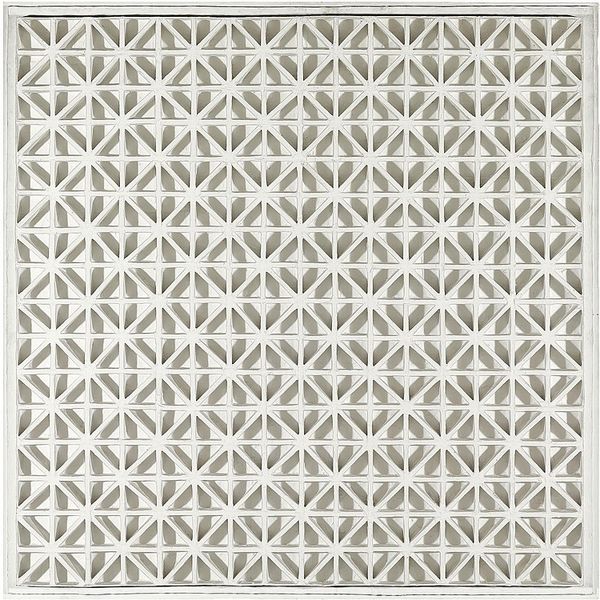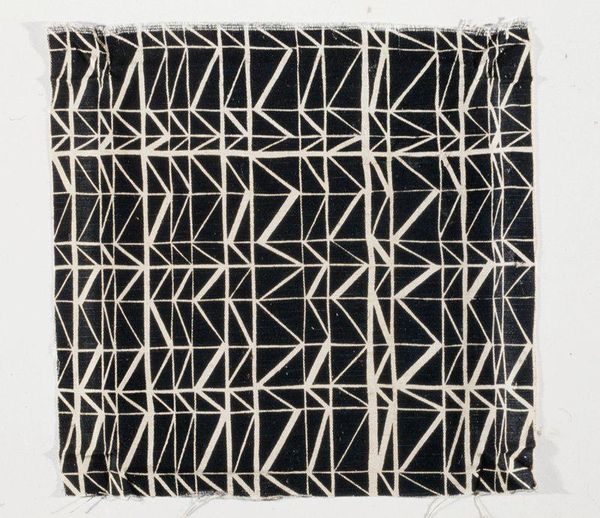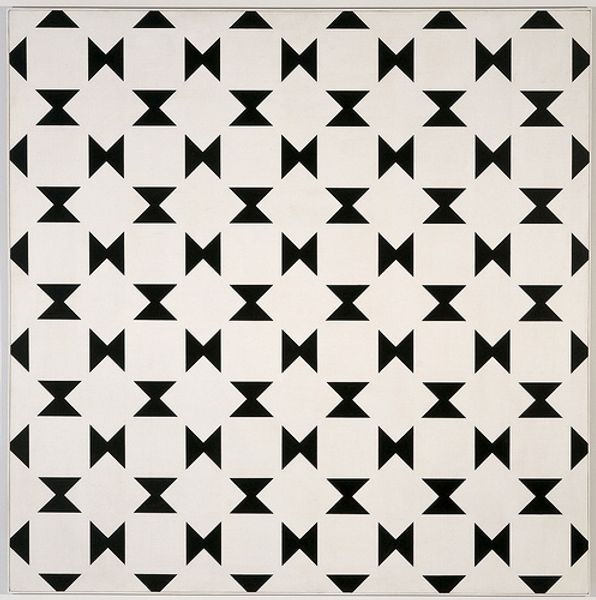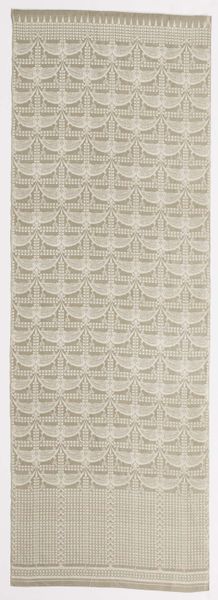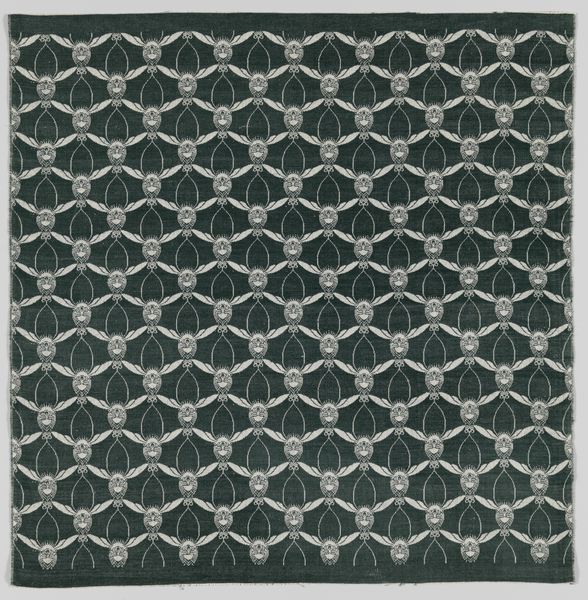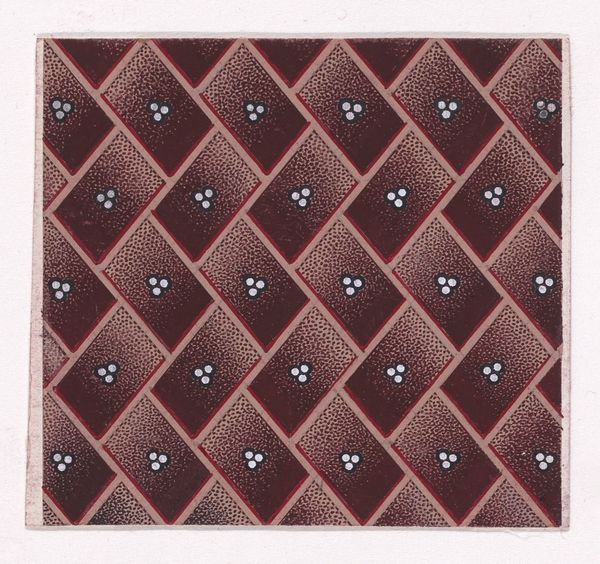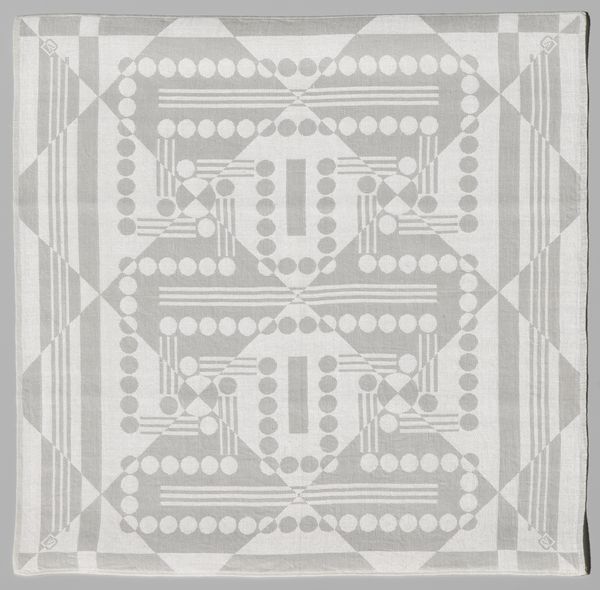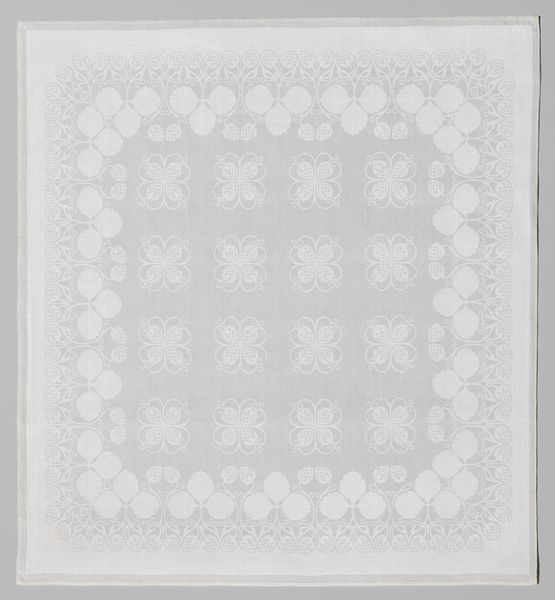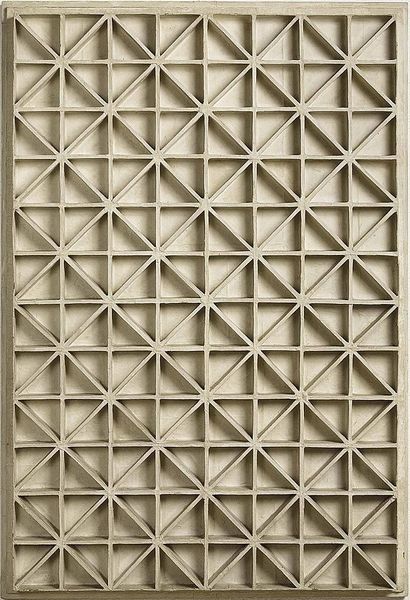
sculpture
#
minimalism
#
pattern
#
constructivism
#
geometric pattern
#
geometric
#
sculpture
#
geometric-abstraction
#
line
Copyright: Johannes Jan Schoonhoven,Fair Use
Curator: Immediately, the geometric pattern, that stark whiteness, the grid. It's arresting in its simplicity. Editor: What you're seeing is "Square with Diagonals" created in 1967 by Johannes Jan Schoonhoven. Schoonhoven was a key figure in the Dutch Nul group, associated with the broader international Zero movement that rejected subjective expression in favor of pure, concrete form. Curator: Yes, exactly. The all-over, grid-like composition— the pattern repeats and extends uniformly. It almost appears as if this grid could extend indefinitely, without limit. Editor: The choice to limit the materials really highlights that concept. The work is made using cardboard and paint. Restricting the color palette and medium reflects that pursuit of pure objectivity and aligns with the minimalist tendencies of the era. Curator: But that objectivity is, paradoxically, so loaded historically. Consider the post-war cultural landscape. The grid is a visual manifestation of rationalism, order… almost a repudiation of the chaos and irrationality of the war years. The adoption of seriality after the atrocities committed by the Nazi's implies an industrial aesthetic, dehumanizing aspects of production that speak directly to its historic moment. Editor: Interesting to bring the socio-political elements to bear. I suppose one could also view the crisp geometry as a desire for clarity. Notice the interplay of light and shadow created by the diagonals in each square of the grid. The lines that separate one square from the next and the interior diagonals of the grid push the eye in conflicting directions; an exercise in precision and discipline of vision that challenges us. Curator: Indeed. And in its cool, impassive surface, it invites a reassessment of the relationship between the artwork and the observer. By purging gesture and expression, Schoonhoven compels the viewer to bring their own experiences and meanings to the table. What seemed purely formal ends up as a mirror reflecting broader social dynamics. Editor: Well, by closely observing Schoonhoven's "Square with Diagonals", one is invited to think of broader philosophical ideas—as much about ourselves and where we stand, as about how geometric pattern, line, form, and composition are defined in and of themselves. Curator: I would only add, and perhaps this applies more broadly, the image in and of itself remains tied to culture.
Comments
No comments
Be the first to comment and join the conversation on the ultimate creative platform.
